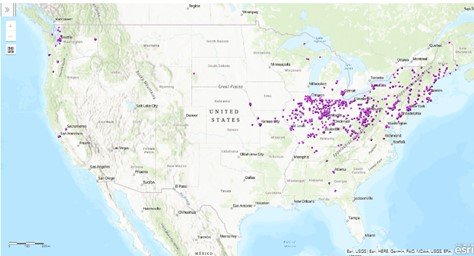Combined Sewer Overflow Basics
To understand combined sewer overflows (CSOs), we first need to know how sewer systems work.
Separate Sanitary Sewer System
Most U.S. communities today have separate sanitary sewer systems. In this type of system, one set of pipes collects wastewater from homes and businesses and carries it to a wastewater treatment plant through sanitary sewers. A separate set of pipes collects stormwater from drains at the end of driveways, around parking lots, and along streets and carries it to a local waterway through municipal separate storm sewer systems (MS4s).
Illustration of a Separate Sanitary Sewer System
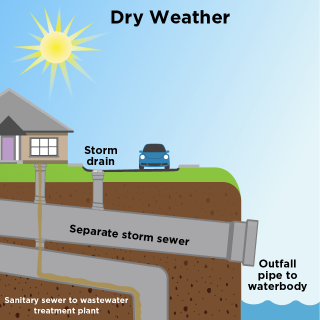
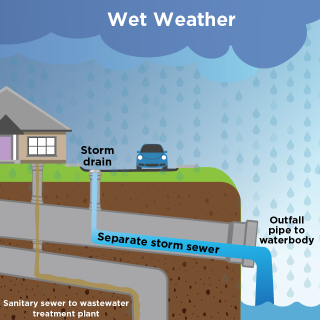
Combined Sewer System
In a combined sewer system, both wastewater and stormwater flow through the same pipes. In dry weather, all wastewater flows to a wastewater treatment plant where it is treated before being discharged to a waterbody. But during wet weather, stormwater also enters the system. The combined flow of wastewater and stormwater can overwhelm the system. Permitted outfalls are located throughout the system to act as relief points during wet weather. These outfalls discharge untreated or partially treated stormwater and wastewater into nearby waterbodies. These discharges are called CSOs.
Illustration of a Combined Sewer System
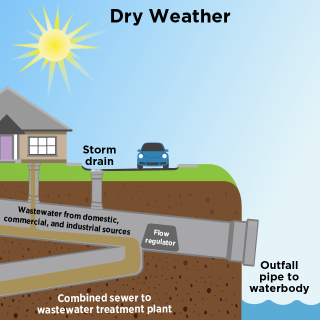
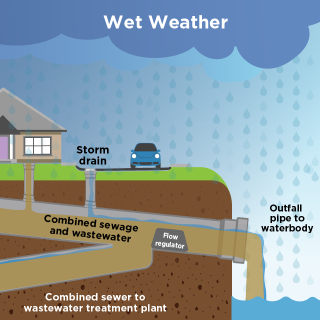
CSOs are a major water pollution and public health concern for approximately 700 communities in the United States. CSOs can contain bacteria, debris, and other hazardous substances that can be harmful to people, pets, and wildlife. CSOs can also cause beach closures, shellfish bed closures, algae growth, reduced oxygen levels in waterways, and aesthetic impacts from floating debris or oil slicks. The Clean Water Act requires communities with CSOs to put controls in place to address these concerns.
Find where CSO outfalls are located across the United States
